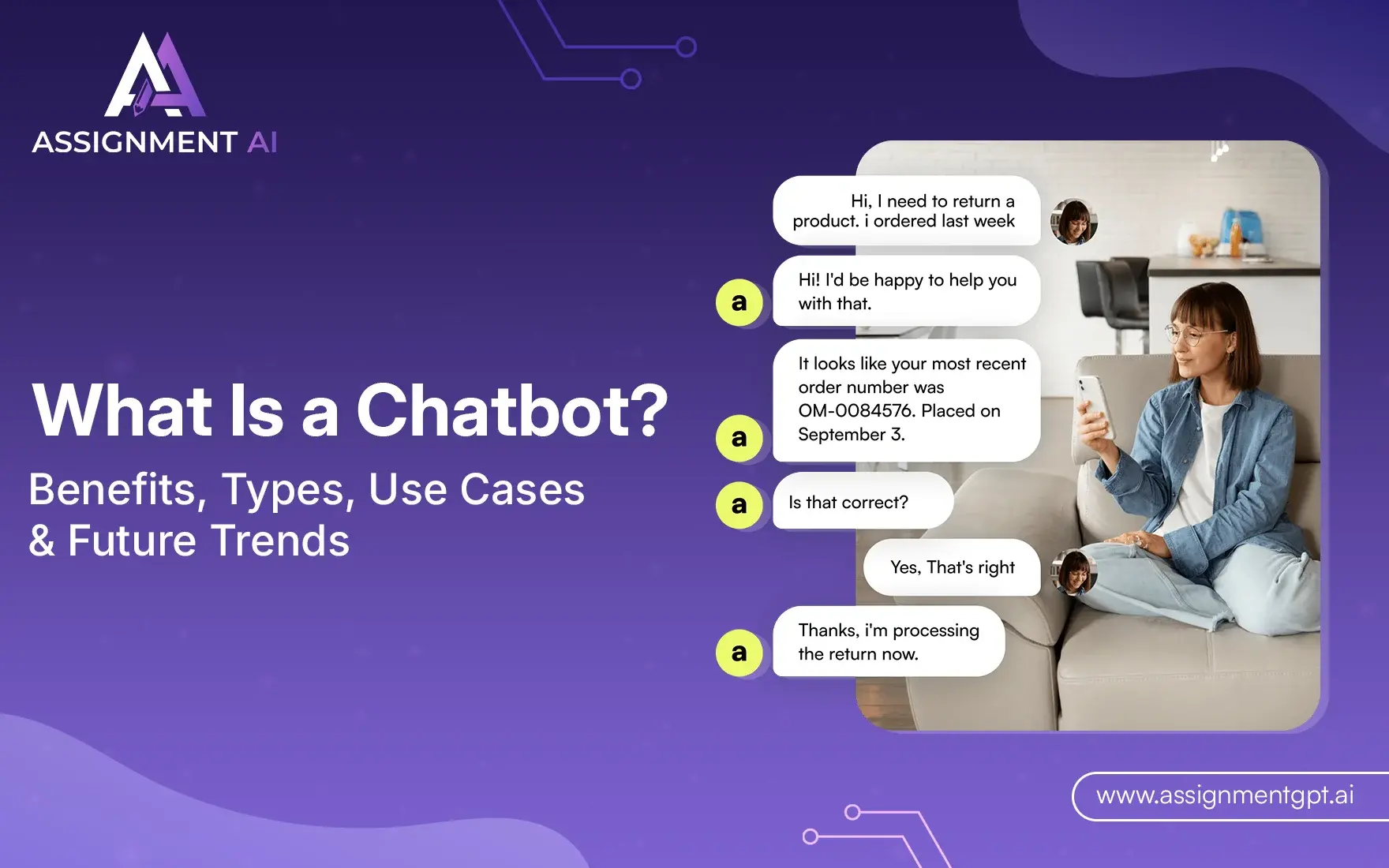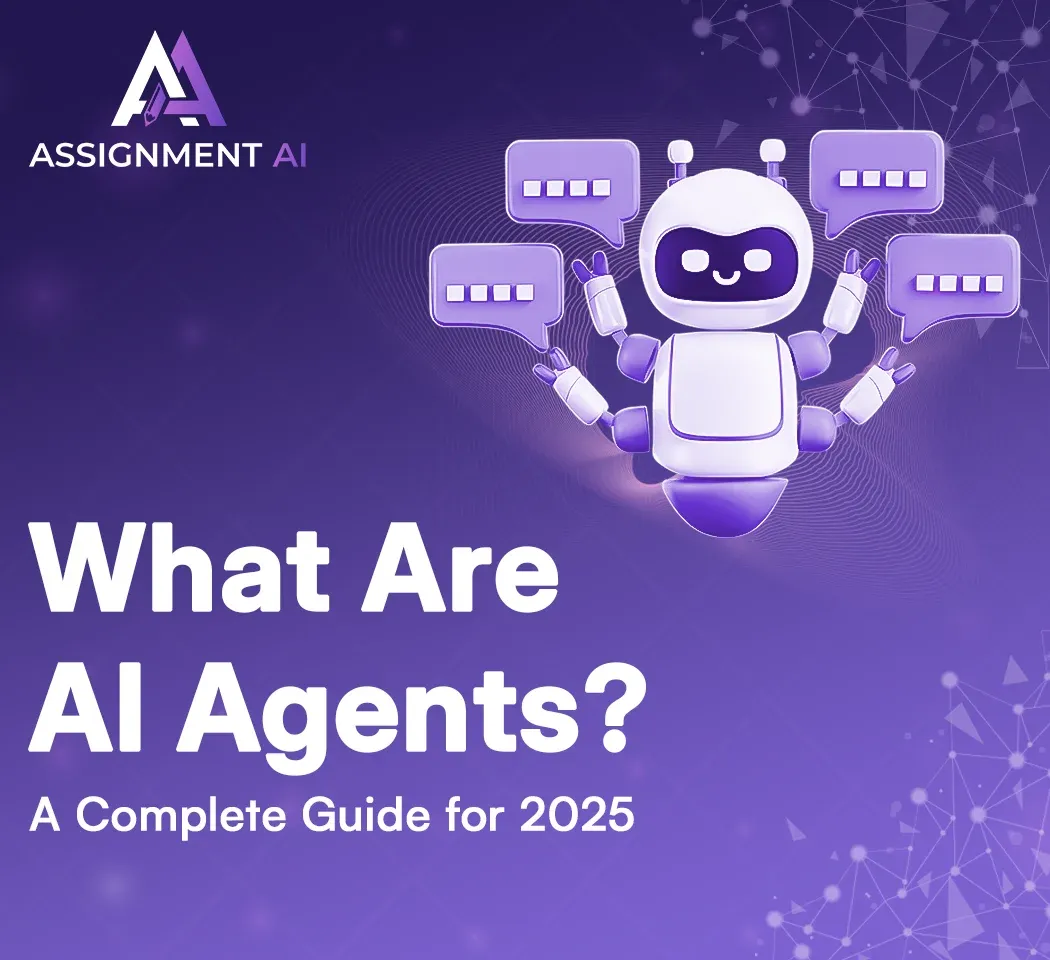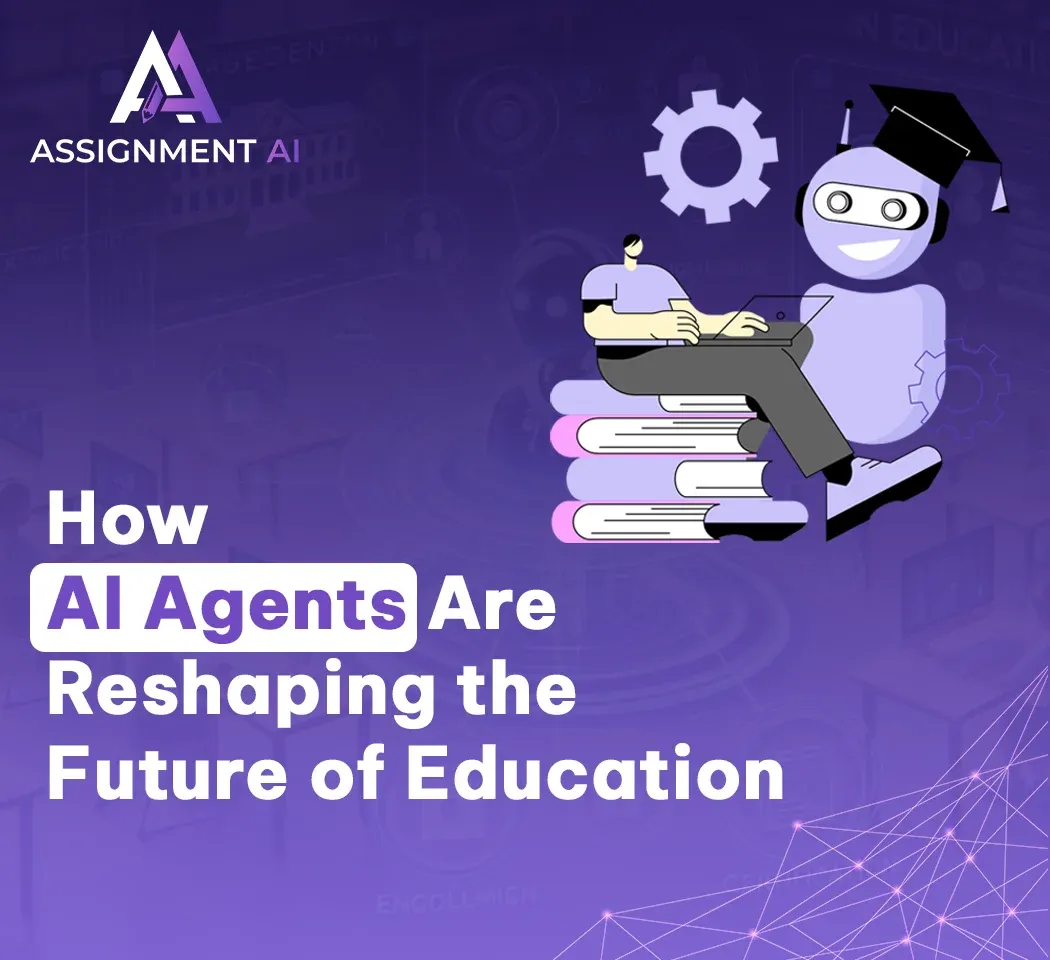AssignmentGPT Blogs
You must have also noticed on platforms like Amazon or Flipkart that if you are looking at a product. For Example, if you search for a headphone and when you check its specifications, then a chat window appears with a pop-up notification in which it is written "Need Help with specs or shipping”? Then you must also be wondering how it knows that I am interested in this product. Actually, this has become possible due to chatbots and user behaviour analysis.
Today in this detailed article, we will talk about the advancements, benefits and use cases of Chatbots, and at the end of the article, I will also give you a pro tip from my experience on how you can implement a Chatbot for your business effectively.
Quick Summary
When Joseph Weizenbaum created Chatbot for the first time in 1966, he would never have thought that in 2025 Chatbot would become so advanced that it would answer the customer itself. Today, Chatbot is used in all businesses, be it E-commerce, Retail or the Medical field.
Today's Chatbots use Natural Language processing (NLP) and Machine Learning (ML), which is why they are able to give flexible answers to questions. Companies also prefer Chatbots because they can answer customer queries related to their services or products 24x7.
My Experience: I have been using chatbots for the last 5 years to solve customer queries and problems in my e-commerce business. This has freed up a lot of my workforce for repeated queries.
Our focus in this article is:
- What are Chatbots, and how many types are there?
- Why are most businesses preferring Chatbots so aggressively?
- What are the benefits of using Chatbots for businesses?
- Do Chatbots follow data security, and how can you securely use Chatbots in your business?
What Is a Chatbot?
Definition: Chatbots are simple, FAQ-trained programs that try to answer customer queries. Chatbots started with fixed queries and scripts, but later, when generative AI advanced, the answering capabilities of AI also increased a lot. Let us understand this with the help of an example.
Chatbot before Artificial Intelligence: If you chat with a Chatbot of an E-commerce platform, you will already get fixed questions there, you have to tap on it, and you will get fixed answers. If you want to ask a question that is not available in the FAQ, the Chatbot will not be able to answer it.
Chatbot After Artificial Intelligence: Chatbots have all the details of that business or company, through which you can ask any questions, and you will get flexible and unique answers every time.
How feels to Chat with Chatbots: I have talked to many different Chatbots and according to that, I felt Chatbots are like digital assistants, in which they used to get information about all the frequently asked questions of your business or services, so that if a user has any query, they can get the solution instantly from the Chatbot, they does not have to wait for the reply or mail of the human support team.
Generative AI Leap: You can also consider Grok-1 and ChatGPT-3.5 as a type of advanced chatbot, as these were like smart chatbots from which you could ask any questions.
In 2025, Chatbots have evolved from basic script programs to become advanced generative bots, which can give flexible answers to users' queries.
Why Were Chatbots Created?
Nowadays, we are seeing Chatbots everywhere around us, but the biggest question that comes up is why these Chatbots were made. Actually, there is a very interesting story behind it. Let’s know about it.
The Vision: In the 1950s, many engineers and inventors had a dream to make such an intelligent machine that could do repetitive tasks automatically. At that time, the concept of “Chatbot” was not even on their mind.
Early Days: If you have seen the technology or smartphone of the 2000s, then you must have realised how frustrating it used to feel earlier, when the automated voice used to say, “1' for this, '2' for that. And even after pressing it many times, it did not run the command.
Mobile Revolution: As smartphones evolved, many apps like WhatsApp messaging apps started providing WhatsApp API to businesses, which gave businesses a very good Chatbot, and after its arrival, many businesses started using WhatsApp API as a Chatbot.
Personal Experience: I have helped many bakeries set up a Chatbot, and their experience was very good. According to them, almost 80% of customer queries are easily handled by a Chatbot.
Purpose: Chatbots not only save a lot of time for businesses but also reduce costs, and it is very easy to implement Chatbots for businesses as most Chatbots are optimized for “mobile-first”, as 96% of internet users access the internet from smartphones, hence having a mobile-optimised Chatbot is very important.
Why Are Chatbots Important?
41% of businesses say that their business sales grew by 67% due to the use of Chatbots, so you can imagine why Chatbots are so important for today's businesses, but let's try to understand it in a little detail.
Meeting Expectations: Today's customers expect 24/7 customer service so that whenever they have a query, they get an answer instantly, and today's artificial intelligence Chatbots can answer even the flexible queries of customers, which increases business sales significantly along with customer experience.
Business Impact: Chatbots can easily handle repetitive tasks, collect data and easily reach out to qualified leads. I have seen many retail clients whose Chatbots keep their customers happy by answering late-night queries.
Customer Benefits: The biggest benefit of Chatbots is that customers do not have to wait for their queries; they get answers to their queries instantly, and companies like Mastercard are using Generative AI for their customer services.
Data Insights: Chatbots collect customer data, in which they store data like emails, name, number, customer requirements, etc., which helps businesses to understand their potential clients.
For example, Companies like Flipkart and Amazon track user activity very well, due to which their pop-up Chatbots recommend personalised products, due to a very high.
Competitive Edge: In today’s business world, along with quality, customers also demand 24/7 best customer service, so it has become very important for businesses to use Chatbots in their work operations. So that they can get a competitive edge, and they can appoint their staff to solve real problems.
How Do Chatbots Work?
The working model of all Chatbots is quite different, but now we will understand the working of artificial intelligence integrated Chatbots that are going to be used most in 2025, so that you have a basic idea and even if you integrate Chatbots in your business, you still know about their working.
Input Processing: Whenever you type or speak in the Chatbot, the Chatbots use NLP (Natural Language Processing) to understand the query. Google Assistant and Alexa are the best examples of this.
Intent Matching: AI Chatbots map your query/input so that they can take action accordingly. To understand your query it used natural language processing system.
For example, when you type "Track Order" in an E-commerce Chatbot, the Chatbot directly shows you the shipping details, which is possible only because of its artificial intelligence.
Response Generation: Basic bots use fixed scripts, but advanced Chatbots use AI to give answers.
For example, if you chat with a generative AI, you will get flexible answers, not fixed answers.
Learning Over Time: Machine learning helps bots to improve themselves. And to test it, I interacted with several generative chatbots and noticed that they responded based on information from our earlier conversations. It was clear they retained context and remembered details from previous chats.
Building Them: There are firms like RejoiceHub and many no-code platforms that can design Chatbots for your businesses in a few hours, and if you require complex Chatbots, then it can take 1 week.
How I Designed an FAQ Chatbot: I designed a simple FAQ for my Tech blog in 3 hours using a no-code platform, and surprisingly those Chatbots were working quite effectively. In fact, even on CMS platforms like WordPress, you get a lot of plugins that can help you to implement Chatbots on your WordPress site.
After the advent of Chatbots, the customer service experience of businesses has become much more efficient and faster. Using Chatbots effectively gives businesses a competitive edge.
Types of Chatbots
As we have understood, Chatbots are of many different types and all have dedicated strengths, and nowadays most Chatbots are dedicated business Chatbots, and the rest of the Chatbots are trained from scratch on the system data of businesses so that they can be personalized. Let us know about six types of Chatbots with real-life scenarios.
Menu-Driven Chatbots
What They Are: Many hotels give predefined lists to customers, you can think of it as a digital menu, in which a customer can choose any food as per their wish. Menu-driven Chatbots are used in Banks, Hotels, Hospitals and Restaurants etc.
Experience: When I was using net banking on the SBI bank site, I saw options like “check balance” and “report fraud.” This menu limits the Chatbot from asking new questions because you can only select questions that are available there.
Best For: Such Chatbots are used for simple tasks where the most asked options are available and the answers are fixed and not flexible.
Hybrid Chatbots
What They Are: It has a keyword recognition system along with combined menus, which increases the flexibility of the Chatbot a lot.
Experience: I have seen that in most of the E-commerce sites that there is a return option, and if you want, you can also initiate the return process from the Chatbot. It can handle both inputs. It uses fixed scripts only, so it is not as advanced as AI-driven Chatbots.
Best For: It can be used for mid-level tasks with some customization.
Voice-Enabled Chatbots
What They Are: In this, you can command the Chatbot with your voice input, just like Alexa and Siri provide facilities.
Experience: When I asked Alexa to play my favourite song, it easily guessed the song while I was humming and started playing it.
Best For: It is used in many businesses, apart from this, it is also used a lot at the individual level. It can be used to set timers or to control other devices.
Contextual Chatbots
What They Are: These are AI-powered bots that remember past interactions. This gives a better experience to the customer because they do not have to give basic details again and again.
Experience: When I told a traveller my travel preference, he suggested flights, hotels and even a budget. When I told him that my budget is less, he provided me with detailed options. According to this, the chatbot seemed like a personal assistant to me.
Best For: Contextual Chatbots are best for personalized and complex interactions.
Scripted or Quick Reply Chatbots
What They Are: These Chatbots use decision scripts and respond quickly with discretion.
Experience: I saw on my gym's website that when I asked for the best workout suggestion for myself, it recommended hours according to my needs, so you can consider this as a basic Chatbot, and it is perfect for repetitive queries.
Best For: This is best for simple, repetitive questions.
Keyword Recognition-Based Chatbots
What They Are: These Chatbots can scan keywords and respond accordingly.
Experience: I typed "How to fix slow wifi" in a tech blog, and he suggested that I fix his issue. These chatbots are a very good option for informational blogs.
Best For: These chatbots can answer complex queries using clear keywords.
What Are the Benefits of Using Chatbots?
Chatbots have a lot of benefits, and all industries use Chatbots as per their business operations so that businesses can keep operations smooth and enhance customer experience.
Reduces Costs
How: When chatbots handle repetitive tasks, businesses can significantly cut customer service costs. This reduces the need to hire and maintain a large customer support team.
Experience: I helped a startup implement a bot that reduced customer service costs by 30%, handling queries like order status, terms and conditions FAQs, all of which helped that startup a lot in making an initially loyal customer base.
Why Businesses Prefer: Using Chatbots allows businesses to operate their customer service 24/7, which saves their overall business cost significantly.
Proactive Customer Interaction
How: These are bots that pitch offers to customers themselves, in which the customer does not need to chat with them. Such Chatbots that give pop-up recommendations are the best example of proactive Chatbots.
Experience: An e-commerce bot popped up on my phone with “Need sizing help?” Before I asked, this boosted my shopping confidence. And such bots increase sales conversion rates significantly.
Why Businesses Prefer: Proactive Chatbots increase engagement, which improves customer satisfaction.
Improves Customer Engagement
How: Chatbots can give 24/7 responses to customers, thus customer experience has increased significantly.
Experience: My Chatbots have solved the queries of my blog readers even at midnight when my team is out of operation.
Why Businesses Prefer: With such Chatbots, customer wait time is significantly reduced, customer experience is significantly increased, and brand loyalty is also increased.
Expands the Customer Base
How: Mostly generative Chatbots qualify leads by asking about needs or budget.
Experience: I saw real estate chatbot filter leads for an agent, saving hours of follow-ups and client analysis.
Why Businesses Prefer: This streamlines the buyer’s journey, and it increases the sales conversion rate for businesses.
Measures Lead Qualifications
How: Bots use KPIs like budget or timeline to identify hot leads.
Experience: A B2B chatbot asked about my company’s needs and passed me to a sales rep with full context. I was more surprised than the bot by how smart it was.
Why Businesses Prefer: This improves sales efficiency for businesses.
Increases Productivity
How: Chatbots free up humans for complex tasks.
Experience: I used an HR chatbot to review applicants' resumes, assess their skills, and automatically filter the top candidates. This helped me find the best staff while freeing up my time to focus on more strategic tasks.
Why Businesses Prefer: As we know, automation boosts operational efficiency.
Saves Time
How: Instant responses cut down on wait times.
Experience: I booked a flight in minutes via a travel bot; if I had done it through that Human booking agent, I would have had to waste a minimum of 20 minutes on phone calls.
Why Businesses Prefer: Chatbots save a lot of time and provide significant benefits to both businesses and customers. They handle communication, provide instant support, and improve overall efficiency.
Common Use Cases of Chatbots
All Chatbots are quite versatile, Chatbots interact with the customer in pop-up animation, and all Chatbots are query solvers, so let's learn about the common use cases of all Chatbots.
Customer Service
Use: It handles queries like order tracking or returns.
Experience: I set up a retail chatbot that successfully handled 70% of customer queries, which significantly reduced call volume. This automation saved the cost of hiring three full-time call executives for the business.
Why Businesses Prefer: Chatbots sort and handle basic issues, escalating complex ones to human agents. This allows human staff to concentrate on solving more important and high-priority problems.
E-Commerce
Use: It can provide product details or shipping information.
Experience: I compared laptop specs via a bot, which even offered a discount code. By this, I get to know all the specifications of my laptop.
Why Businesses Prefer: ChatBots personalize shopping experience and boost conversions.
Virtual Assistants
Use: It manages personal tasks like reminders or searches.
Experience: In my home, Siri sets my daily reminders, keeping me on track. I use it for so many basic tasks, like listening to my favourite songs or listening to live news.
Why Businesses Prefer: Assistants like Alexa or Google Assistants enhance user convenience, and nowadays, most businesses have developed virtual assistants.
HR and IT
Use: It automates tasks like onboarding or system checks.
Experience: My friend's company uses an HR bot that manages a variety of automated tasks, such as handling salary slips, holiday requests, and other basic employee queries. This reduces manual workload and improves efficiency.
Why Businesses Prefer: Bots improve internal efficiency, and Chatbots are increasingly being used for HR or IT operations.
Healthcare
Use: These Chatbots Schedule appointments, Blood tests, or send reminders.
Experience: Recently, I booked a doctor’s visit via a Redcliffe Lab's bot, with a text confirmation.
Why Businesses Prefer: Chatbots simplify patient interactions, making healthcare services quite smooth..
Banking and Retail
Use: These Chatbots handle transactions or enquiries. Most ATM machines also use Chatbots.
Experience: I asked Domino's Chatbot to order the best corn pizza for 250rs, it easily recommended the best pizza, and the Chatbot automatically ordered that pizza for me.
Why Businesses Prefer: Chatbots speed up routine consumer tasks.
Public Sector
Use: This can manage city service requests or utility inquiries easily
Experience: Personally, I haven't tested this, but my colleague suggests its use case is so rapidly growing.
Why Businesses Prefer: Such chatbots enhance public service accessibility, and they help people a lot with basic options and navigation.
Risks and Limitations of Chatbots
No matter how perfect chatbots are, they still have many flaws, which I have personally faced in different businesses.
Security and Data Leakage
Issue: Sometimes, generative AI bots can share sensitive company data due to bugs or glitches.
Experience: I saw a chatbot accidentally reveal a user’s address from a prior chat; that's why companies make the Chatbot live for customers only after a lot of testing.
Hallucinations
Issue: AI can generate wrong or irrelevant answers to customers, which can also create confusion for them.
Experience: A bot gave me incorrect specs for a niche product, due to which I was not trusting that chatbot, and I had to check the specs manually myself.
Limited Understanding
Issue: Chatbots often struggle with slang, typos, or complex queries, which is a common challenge in India due to the wide variety of languages and dialects. This can lead to misunderstandings or incorrect responses.
Experience: I typed “WiFi’s busted,” and the bot got confused by my casual phrasing. It interpreted it as if my broadband had burst, when I simply meant that my WiFi was down.
User Behavior
Issue: As we know, Humans are unpredictable, switching from questions to commands.
Experience: A user flipped from asking about products to demanding a refund; this bot got confused as to what the customer's exact query was.
User Satisfaction
Issue: Customers expect perfection and get frustrated when bots falter or are misunderstood.
Experience: Recently, I asked a transaction-related query from the Navi customer chatbot, and it felt like I was asking about some offer.
Best Practices and Tips for Selecting Chatbots
How effective a chatbot will be in any business depends largely on the right chatbot, and if you use the right chatbot, you will get better ROI.
- Ask What It Takes to Build, Train, and Improve Chatbots Over Time
First of all, ask yourself whether you need a different bot for your business or whether you need an already trained bot or whether you need to train it on your business data.
Tip: In this case, you should check if the platform uses historical chat logs for training.
- Determine if the Chatbot Meets Deployment, Scalability, and Security Requirements
Whenever you deploy a Chatbot, make sure to ask your partner company if the Chatbot will be right for your business, and whether your Chatbot follows all security requirements or not?
Tip: Use Chatbots, which ensure compliance with regulations like HIPAA or GDPR.
- Pick a Solution That Can Accomplish Immediate Goals but Won’t Limit Future Expansion
Prefer Chatbots that become more expert as your business scales and that have adaptability and learning capabilities.
Tip: You can prefer scalable platforms or template Chatbots.
- Understand the Impact AI Has on the Customer Experience
Before implementing a chatbot, it's important to audit your business processes and customer experience. Evaluate how a chatbot will impact operations, support quality, and overall customer satisfaction.
Tip: In the beginning, try to choose bots with strong AI to reflect your brand’s tone..
The Future of Chatbots
In 2025, the face of generative AI-integrated Chatbots and 5G speed has advanced significantly, which can answer even the complex queries of the company. Apart from this, smart chatbots can also access internet data.
Personalized Experiences: Future bots will be able to predict customer needs and offer highly personalized experiences. Just by analyzing user behaviour and preferences, they'll provide the best product recommendations instantly.
Voice Improvements: In the next few years, voice bots will handle accents and slang better. I can't wait for Alexa to understand my Indian dialect requests!
Enterprise Integration: Generative Chatbots will sync with business systems for predictive insights, like analyzing customer behaviour. This will increase the customer service experience.
Challenges: Many companies may face criticism as chatbots begin to replace traditional call centres and customer care jobs, leading to widespread job losses and unemployment for lakhs of people. While this shift benefits the companies a lot.
It also raises serious concerns around data security, privacy, and ethical use of AI.
Timeline: By 2027, we can expect that Chatbots will be able to handle complex tasks easily, and it will have become quite easy for them to recommend the best product based on user behaviour.
Conclusion
Chatbots aren't a new technology; they've been around since the early 20th century. In their early stages, users had to press manual keys, making the experience quite frustrating. However, today’s generative AI chatbots have evolved tremendously, offering flexible, natural responses to a wide range of queries.
Using ChatBots reduces the time, efforts, and costs of businesses.
My personal recommendation is that whenever you implement chatbots for your business, choose one based on your specific business requirements, operational needs, and historical data. This ensures the chatbot aligns well with your goals and delivers real value.
FAQs
1. Are chatbots the same as virtual assistants?
2. Are chatbots safe to use?
3. Can chatbots replace humans?
4. What's the future of chatbots?
5. What are the types of chatbots?
6. What are the benefits of chatbots?
7. What are the risks of using chatbots?
8. What technologies are commonly used in modern chatbots?
9. How important is testing and monitoring for chatbot success?
Content writer at @AssignmentGPT
Ashu Singh, content writer at AssignmentGPT, crafting clear, engaging content that simplifies complex tech topics, with a focus on AI tools and digital platforms for empowered user experiences.
Master AI with
AssignmentGPT!
Get exclusive access to insider AI stories, tips and tricks. Sign up to the newsletter and be in the know!

Transform Your Studies with the Power of AssignmentGPT
Empower your academic pursuits with tools to enhance your learning speed and optimize your productivity, enabling you to excel in your studies with greater ease.
Start Your Free Trial ➤Start your success story with Assignment GPT! 🌟 Let's soar! 🚀
Step into the future of writing with our AI-powered platform. Start your free trial today and revolutionize your productivity, saving over 20 hours weekly.
Try For FREE ➤








